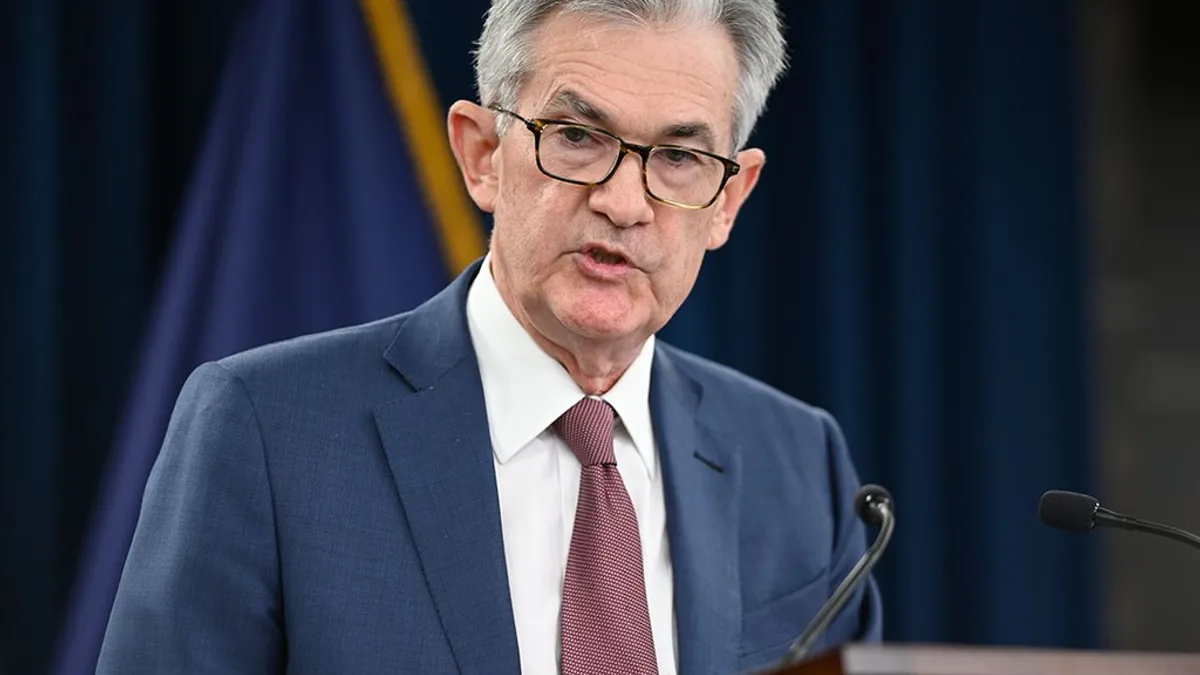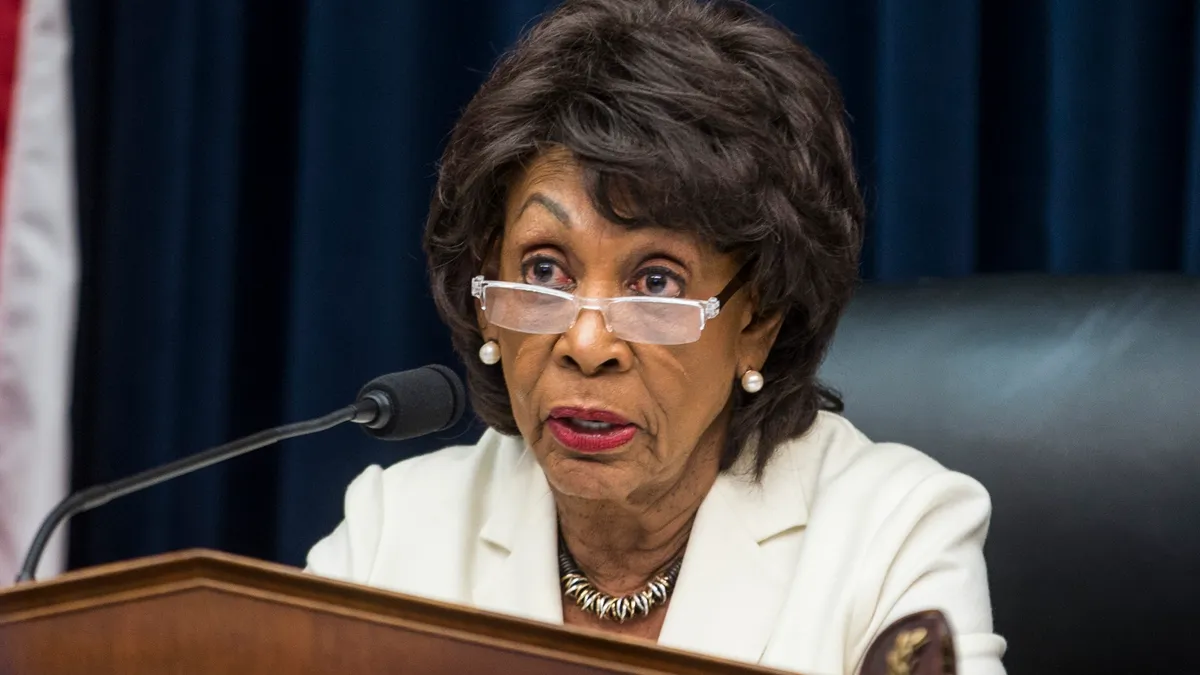Dive Brief:
- President Donald Trump on Monday renewed his attack against Jerome Powell and his leadership of monetary policy, calling the Federal Reserve chair “a loser” for not cutting the main interest rate.
- “There can be a slowing of the economy unless Mr. Too Late, a major loser, lowers interest rates, now,” Trump said in a social media post, three days after one of his top economic advisors said the White House is exploring the removal of Powell.
- After Trump’s comments the yield on the 10-year Treasury, the benchmark for business and household borrowing, rose to 4.4%. The U.S. Dollar Index, which tracks movement of the greenback compared with a basket of six major currencies, fell 1%.
Dive Insight:
Since Trump took office in January, Powell has said he would not bow to a request by Trump to resign and repeatedly emphasized that an effort at removal would contradict the law.
Powell has also said, echoing the consensus among economists, that central bank independence from political influence is essential to effective monetary policy.
“Generally speaking, Fed independence is very widely understood and supported in Washington, in Congress, where it really matters,” he said Wednesday, answering a question after a speech.
The prospect of so-called stagflation, in which inflation rises as the economy slows below its potential, complicates the Fed’s efforts to fulfill its dual mandate of price stability and maximum employment while raising the prospect that it will face external pressure.
The Fed in the months ahead may need to choose between curbing price gains or reducing unemployment, Powell said.
“We may find ourselves in the challenging scenario in which our dual-mandate goals are in tension,” he said Wednesday.
“Unemployment is likely to go up as the economy slows in all likelihood and inflation is likely to go up as tariffs find their way — and some parts of those tariffs — come to be paid by the public,” Powell said in answer to a question after his speech.
Trump on Monday restated a recent allegation by one of his top economic advisers that Powell has favored Democrats.
“Powell has always been “To [sic] Late,” except when it came to the election period when he lowered in order to help sleepy Joe Biden, later Kamala, get elected,” Trump said. “How did that work out?”
Noting progress in slowing inflation, the central bank trimmed the federal funds rate by a half percentage point in September 2024, less than two months before the presidential election. It was the only reduction in borrowing costs last year before the national election in early November.
During Trump’s first term, the central bank in 2019 cut the benchmark rate by a 0.25 percentage point in three consecutive meetings from August until October of that year.
Several months later, as the pandemic unfolded and with Trump still in office, the Fed slashed the main rate twice in March 2020 for a total of 1.5 percentage points. It eased borrowing costs several times more to combat high unemployment and rekindle economic growth.
In March 2022, with Biden in office, the central bank sought to control rapidly rising price pressures by beginning the first of several rate increases. By July 2023, policymakers increased the main rate a total of 5 percentage points. It was the central bank’s most aggressive tightening in four decades.
This year policymakers have held the main interest rate steady in two consecutive meetings as inflation persists above their 2% target.
Powell in recent comments has said the Fed is in no hurry to change borrowing costs and repeatedly noted the difficulty of forecasting the economic impact from Trump’s high tariffs and changes to immigration, regulation and taxation.
“Those policies are still evolving, and their effects on the economy remain highly uncertain,” he said Wednesday.
Economists at several organizations, including JPMorgan Chase and Citigroup, have recently marked down their outlook for the economy this year.
The Conference Board expects gross domestic product to expand just 1.6% this year compared with 2.8% in 2024.
“The slower projected growth rate reflects the impact of deepening trade wars, which may result in higher inflation, supply chain disruptions, less investing and spending and a weaker labor market,” Justyna Zabinska-La Monica, the Conference Board’s senior manager for business cycle indicators, said Monday in a statement.















